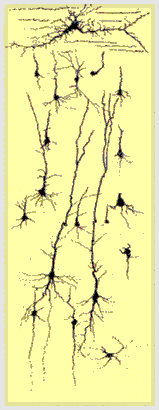Sensory Enrichment Therapy
By using Sensory Enrichment, we can stimulate brain plasticity in a way that enables the brain to make new connections.
Environmental Enrichment
Environmental Enrichment is the stimulation of the brain by its surroundings. There are 3 components to environmental enrichment: Social enrichment, Activity enrichment and Sensory enrichment. At Mendability, we focus on Sensory Enrichment.
Sensory Enrichment Therapy
Sensory Enrichment is a form of therapy that uses two or more senses concurrently, which results in a significant reduction of the discomfort that the autistic brain is experiencing.
Brain Plasticity
Brain plasticity refers to the ability of the brain to change its structure even after development is complete.
Are Sensory Issues Holding Your Autistic Child Back?
Discover a Life-changing, Proven Method to Empower Your Child and Transform Their World! Right from Your Home
Environmental Enrichment leads to better brains
Animal studies have shown for a very long time that an enriched environment that provides more sensory and motor experiences leads to improvements in brain development.
In 1947 Donald Hebb found that rats raised as pets performed better on problem-solving tests than rats raised in cages (1).
In the 1960’s Mark Rosenzweig showed the measurable differences between the brains of rats raised in small cages, and the brains of rats that had access to all sorts of toys and could play with other rats.
Rosenzweig established that Environmental Enrichment increased the size and weight of their brains. The brains of the enriched rats had more brain cells, more connections, and a stronger auxiliary system to support this enhanced brain activity (2).
- Hebb DO (1947). “The effects of early experience on problem solving at maturity”. American Psychologist 2: 306–7.
- Krech D, Rosenzweig MR, Bennett EL (December 1960). “Effects of environmental complexity and training on brain chemistry”. J Comp Physiol Psychol 53 (6): 509–19.

Environmental Enrichment is shown to help the brain compensate for a wide variety of issues
- Prenatal alcohol
- Prenatal cocaine
- Prenatal stress
- Lead exposure
- Stroke
- Seizures
- Brain lesions
- Percussive head injury
- Neural transplants
- Neuronal death in aging
- Valproic acid*
- Huntington’s disease
- Parkinson’s disease
- ALS
- Cerebellar degeneration
- LTP deficits
- Loss of NMDA receptors
- Alzheimer’s disease
- Down syndrome
- Fragile X syndrome*
- Repetitive behavior*
- Rett syndrome*
*Animal Models of Autism
